




Related bibliographies:
Spain
Fuerteventura
Gomera
Gran Canaria
Hierro
Lanzarote
Lobos
Palma
Tenerife
Atlantic Ocean
Reptiles
 Lizards Lizards
 Lacertidae Lacertidae
 Phyllodactylidae Phyllodactylidae
 Scincidae Scincidae
 Turtles Turtles
 Cheloniidae Cheloniidae
 Dermochelyidae Dermochelyidae






































































































































































































































































































































| |

Note:
In order to limit redundancy, relevant literature indexed in the related bibliographies in the left column may not have been included in this page. For a comprehensive search of literature, these bibliographies should therefore also be consulted.
 |
Anonymous. 1994. Seminar on recovery plans for species of amphibians and reptiles. El Hierro, Canary Islands, Spain, 11-14 October 1993. Council of Europe Environmental Encounters Series 19: 1-100.
Ahl, E. 1925. Über eine ausgestorbene Riesenschildkröte der Insel Teneriffa. Zeitschrift D. geol. Ges. Berlin 77(4): 575-580.
Baez, M. 1987. Les reptiles des Iles Canaries. Bulletin de la Societe Zoologique de France 112(1-2): 153-164.
Baez, M.; Bacallado, J.J.; Martin, A. 1981. Los reptiles de Canarias: importancia cientifica y problematica conservacionista. (Abstract). Reunion Iberoamericana de Conservacion de Zoologia de Vertebrados 1980: 56.
Beyhl, F.E. 1997. Zum Blutenbesuch von lacertiden Eidechsen auf den Inseln Madeira und El Hierro. Salamandra 33(3): 213-218.
Bings, W. 1980. Herpetologische Studien auf Teneriffa (Kanarische Inseln). Salamandra 16(4): 203-214.
Bischoff, W. (ed.) 1998. Handbuch der Reptilien und Amphibien Europas. Band 6: die Reptilien der Kanarischen Inseln, der Selvagens-Inseln und des Madeira-Archipels. AULA-Verlag, Wiesbaden. 448 pp.
Bischoff, W. 2000. Die Reptilien der Kanarischen Inseln. (Special edition). Quelle & Meyer Verlag, Wiebelsheim. 448 pp.
Bischoff, W.; Nettmann, H.K.; Rykena, S. 1979. Ergebnisse einer herpetologischen Exkursion nach Hierro, Kanarische Inseln. Salamandra 15(3): 158-175.
Boettger, O. 1874. Reptilien von Marocco und den canarischen Inseln. Abhandlungen der Senckenbergischen Naturforschenden Gesellschaft (Frankfurt) 9: 121-192.
Böhme, W.; Hütterer, R. (eds.). 1985. Symposium 'Herpetologia Canariensis'. Bonner Zoologische Beiträge 36(3-4): 233-606.
Brito Hernandez, A.; Cruz Simo, T. 1982. Tortugas marinas en Canarias. Vieraea 11(1-2) [1981]: 319.
Brongersma, L.D. 1968. Notes on some turtles from the Canary Islands and from Madeira. Proceedings Koninklijke Nederlandse Akademie van Wetenschappen 71C: 128-136.
Calabuig Miranda, P.; Liria-Loza, A. 2007. Recovery of Marine Turtles injured in the water of the Canary Island archipelago (Spain) between 1998 and 2003. pp. 111, 113-123. In: Lopez-Jurado, L.F. & Liria Loza, A. (eds.). Marine turtles: recovery of extinct populations. Instituto Canario Ciencias Marinas, Telde. 227 pp.
Carnero, A.; Perez Padron, F. 1977. Los lagartos de la islas Canarias. Vida Silvestre 24: 248-253.
Cejudo, D.; Marquez, R. 2001. Sprint performance in the lizards Gallotia simonyi and Gallotia stehlini (Lacertidae): implications for species management. Herpetologica 57(1): 87-98.
Clarke, T.; Collins, D. 1996. A birdwatchers' guide to the Canary Islands. Prion Ltd, Perry, Cambridgeshire. 110 pp.
Cyrén, O. 1933. Biologiskt från Madeira och Kanarieöarna. [Biological notes from Madeira and the Canary Islands]. (In Swedish). Fauna och Flora (Uppsala) 1933: 178-187.
Cyrén, O. 1934. Zur Kenntnis der Lacertiden der iberischen Halbinsel und Makaronesiens. Göteborgs Vetensk. Samh. Handl. (5B) 4(1): 1-64.
Emerson, B.C. 2003. Genes, geology and biodiversity: faunal and fLoral diversity on the island of Gran Canaria. Animal Biodiversity and Conservation 26(1): 9-20.
Gallego Castellon, L.; Lopez, S. 1983. Vertebrados ibericos, 3. Reptiles. Luis Gallego Castellon, Seville. 142 pp.
Glandt, D. 2015. Die Amphibien und Reptilien Europas - Alle Arten von den Kanarischen Inseln bis zum Ural im Porträt. Quelle & Meyer, Wiebelsheim. 550 pp.
Grossmann, W. 2008. Herpetologische Beobachtungen im Norden Teneriffas. Sauria (Berlin) 30(2): 5-10.
Guerrero, J.C.; Real, R.; Vargas, J.M. 1997. Corologia de los reptiles de la Macaronesia. Monografias de Herpetologia 3: 421-429.
Guerrero, J.C.; Vargas, J.M.; Real, R. 2005. A hypothetico-deductive analysis of the environmental factors involved in the current reptile distribution pattern in the Canary Islands. Journal of Biogeography 32(8): 1343-1351.
Klemmer, K. 1976. The amphibia and reptilia of the Canary Islands. Monographiae Biologicae 30: 433-456.
Krefft, G. 1950. Beiträge zur Kenntnis der kanarischen Echsenfauna. Zoologischer Anzeiger 145(Erganzungsb.): 426-444.
Lopez-Jurado, L.F. 1991. Synopsis of the canarian herpetofauna. Revista Espanola de Herpetologia 6: 107-118.
Lopez-Jurado, L.F. 2007. Historical review of the archipelagos of Macaronesia and the Marine Turtles. pp. 51, 53-76. In: Lopez-Jurado, L.F. & Liria Loza, A. (eds.). Marine turtles: recovery of extinct populations. Instituto Canario Ciencias Marinas, Telde. 227 pp.
Machado, A. 1985. Hypothesis on the reasons for the decline of the large lizards in the Canary Islands. Bonner Zoologische Beiträge 36(3-4): 563-575.
Machado, A.; Lopez-Jurado, L.F.; Martin, A. 1985. Conservation status of reptiles in the Canary Islands. Bonner Zoologische Beiträge 36(3-4): 585-606.
Martin, C. 1995. Primeros pasos en defensa de las tortugas marinas en Canarias. Quercus 108: 31-34.
Maso, A.; Pijoan, M. 2011. [Amphibians and reptiles of the Iberian Peninsula, Balearics and Canaries]. (In Spanish). Omega, Barcelona. 848 pp.
Mateo, J.A. 1990. Aspectos biogeograficos de la fauna reptiliana en las islas espanolas. Revista Espanola de Herpetologia 4: 33-44.
Mateo, J.A. 1997. Las especies introducidas en la Peninsula Iberica, Baleares, Canarias, Madeira y Azores. Monografias de Herpetologia 3: 465-475.
Mateo, J.A.; Afonso, O.M.; Geniez, P. 2007. Los reptiles de Canarias, una nueva sinopsis puesta al dia. Boletin de la Asociacion Herpetologica Espanola 18: 2-10.
Medina, F.M.; Nogales, M. 2009. A review on the impacts of feral cats (Felis silvestris catus) in the Canary Islands: implications for the conservation of its endangered fauna. Biodiversity and Conservation 18(4): 829-846.
Mellado, J. 1982. Herpetofauna de las islas Canarias. Vida Silvestre 43: 166-175.
Mobbs, A.J. 1981. Observations on the herpetofauna of Tenerife. Herptile 6(3): 5-12.
Nogales, M.; Martin, A.; Delgado, G.; Emmerson, K. 1988. Food spectrum of the feral cat (Felis catus L., 1758) in the juniper woodland on El Hierro (Canary Islands). Bonner Zoologische Beiträge 39(1): 1-6.
Oros, J.; Arencibia, A.; Monagas, P. 2012. Anthropogenic causes of mortality of Sea Turtles in the Canary Islands: a multidisciplinary approach to the conservation of endangered Sea Turtles. pp. 53-86. In: Cosgrove, M.J. & Roe, S.A. (eds.). Turtles: anatomy, ecology and conservation. Nova Science Publishers, New York. 222 pp.
Oros, J.; Deniz, S.; Rodriguez, J.L.; Rodriguez, F.; Molina, J.M.; Fernandez, A. 1996. Hallazgos anatomopatologicos y microbiologicos en reptiles mantenidos en cautividad y tortugas marinas de vida libre. Revista Espanola de Herpetologia 10: 117-125.
Owen, D.F.; Smith, D.A. 1990. Interpopulation variation and selective predation in the meadow brown butterfly, Maniola jurtina (L.) (Lepidoptera: Satyridae) in the Canary Islands. Biological Journal of the Linnean Society 39(3): 251-267.
Pasteur, G.; Keymar, P.F.; Perret, J.L. 1988. Canarian skink systematics. Contrasting insular diversifications within a species subgroup. An introduction. Memoires et Travaux de l'Institut de Montpellier de l'Ecole Pratique des Hautes Etudes 18: 1-42.
Rogner, M. 1979. E(chs)xkursionen zu den Kanarischen Inseln. Aquarien Magazin 13(9): 456-461.
Rogner, M. 1988. Zur Herpetofauna der Kanarischen Inseln. Teil 2: Insel Hierro. Aquarium (Bornheim) 225: 171-174.
Rogner, M. 1990. Zur Herpetofauna der Kanarischen Inseln. 4. Insel Teneriffa. Aquarium (Bornheim) 251: 51-55.
Rogner, M. 1992. Zur Herpetofauna der Kanarischen Inseln. 5. Gran Canaria. Aquarium (Bornheim) 279: 35-38.
Rogner, M. 1998. Zur Herpetofauna der Kanarischen Inseln. Teil 7 (Schluss): Lanzarote. Aquarium (Bornheim) 344: 49-53.
Rogner, M.; Voigt, H. 1987. Zur Herpetofauna der Kanarischen Inseln. Teil 1. Insel Gomera. Aquarium (Bornheim) 222: 649-654.
Rösler, H. 2015. Subrezente Knochenfunde einer Geckoart von La Gomera (Kanarische Inseln). Sauria (Berlin) 37(1): 34-40.
Saemann, J. 2006. Besuch bei den "Rieseneidechsen" von Teneriffa und El Hierro. Die Eidechse 17(3): 65-74.
Salvador, A. 1975. Los eslizones de la Isla de la Gomera. Boletin Estac. cent. Ecol. 4(8): 83-85.
Salvador, A. 1985. Guia de campo de los anfibios y reptiles de la Peninsula Iberica, Islas Baleares y Canarias. Alfredo Salvador Milla, Leon. 255 pp.
Sämann, J. 2013. Das neue Zucht- und Forschungszentrum für die kanarischen Rieseneidechsen auf El Hierro. Terraria-Elaphe 2013(44): 74-78.
Schuhmann, H.J. 1994. Artenschutz für Reptilien und Fische. DATZ (Die Aquarien- und Terrarien-Zeitschrift) 47(10): 663-665.
Steindachner, F. 1891. Über die Reptilien und Batrachier der westlichen und östlichen Gruppe der Canarischen Inseln. Annalen des Kaiserlich-Königlichen Naturhistorischen Hofmuseums (Wien) 6: 287-306.
Tersa, E.; Pether, J.; Mateo, J.A. 2010. Evaluación de las poblaciones de reptiles canarios introducidos en Fuerteventura (Islas Canarias). Boletin de la Asociacion Herpetologica Espanola 21: 104-109.
Troidl, S.; Troidl, A. 2014. Herpetologische Fotoreisen nach Teneriffa mit besonderer Betrachtung von Gallotia intermedia. L@certidae 2014(7): 101-131.
Voggenreiter, V. 1985. Ausgewählte Arealkarten von Pflanzen und Tieren der Insel Tenerife und ihre ökologisch-chorologische Interpretation. Bonner Zoologische Beiträge 36(3-4): 261-276.
Zimmermann, H. 1984. Die Echsen von Teneriffa. Lebensraum, Verhalten, Fortpflanzung. Aquarien Magazin 18(8): 390-396.
|
| |


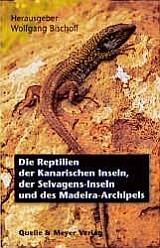

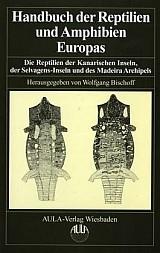

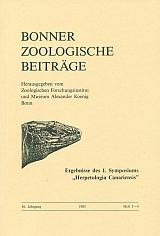

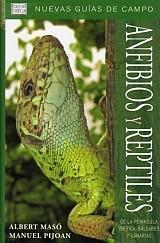

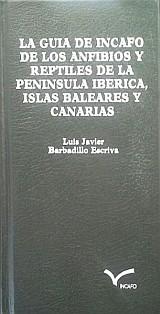

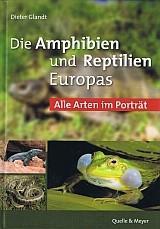











































































































































































|



